How to Forage & Use Pine Resin
Learn how to forage and harvest pine resin, then use it to make a first aid salve, a decongestant balm, and a pine resin sore muscle rub!

Resin is a substance that oozes or exudes from pine trees, and some other plants, to help heal wounds or seal off insect damage. Depending on what time of year you forage, and the age of the resin, it may be soft and sticky, or it may be in hard chunks.
Pine resin has benefits for humans too! It’s antimicrobial and increases circulation, making it useful in products such as:
- first aid salves for minor scrapes and nicks
- drawing salves for splinters and boils
- rubs for aches & pains
- soap for various skin conditions
- balms for chapped or dry skin
It has a fresh piney scent that smells pleasant to most people, dependent upon the type of tree you harvest it from. Some species of trees produce more resin than others.
What’s the difference between resin & rosin?
Rosin is a leftover byproduct that you get after resin is distilled into turpentine. Rosin is also called ‘colophony’ and is used by musicians who play stringed instruments.
Resin + Processing = Turpentine + Rosin
Rosin is not used in the same way as resin. Rosin doesn’t have the benefits of the whole plant resin. If you’re purchasing resin for skincare and herbal products, be sure it’s RESIN, not ROSIN.

Types of Pine to Harvest Resin From
You can forage resin from all types of pines. Around our area, we mainly have eastern white pine (Pinus strobis), Virginia pine (Pinus virginiana), and loblolly pine (Pinus taeda), so that’s what we use. Other pines to collect resin from include pinyon (Pinus edulis) and Ponderosa (Pinus ponderosa). The resin from spruce or some firs is also useful.
One evergreen you don’t want to accidentally confuse with pine is Yew (Taxus spp). Please read Green Deane’s article on Yew, over at Eat the Weeds to learn more about its toxicity.
The Arbor Day Foundation has an awesome interactive “What Tree Is This?” feature on their site. It should help you get started recognizing the types of pine that grow around you.
You can also check your local or state resources – they have tons of helpful information available! We found the Virginia Department of Forestry’s Common Native Trees of Virginia Guide (which you can freely download on their site) really helpful when starting to learn our trees.

How to Sustainably Harvest Pine Resin
We strictly gather from trees that have fallen during storms – winter is a perfect time, since yearly snow and ice storms always bring down a few pine trees. Sometimes the tree will have a supply of resin from previous wounds, other times we cut the tree into smaller sections for moving it out of our yard, or from the chicken/goat area, and resin will ooze from those branch cuttings.

If you must gather from living trees do so carefully. Remember that resin is like a bandage over a tree wound. Since it’s an important part of tree healing, you don’t want to just rip or dig it off of a living tree. It’s best to harvest the resin when chunks of it have fallen to the ground, or if you find some dripping further down the trunk, past the wounded area.
An old butter knife is perfect for popping off cold chunks, or scraping the softer bits from a fallen tree. Since the resin is sticky, collect it in a paper cup, piece of parchment paper, or a jar dedicated to resin collecting.

When to Harvest
You can harvest pine resin year ’round. The colder weather of winter is an especially good time to forage for storm-fallen trees and branches. The resin is also hardened by cold temperatures, making it easier to collect.
How to Clean Pine Resin Off of Hands
Unless you wear gloves, you’re likely to get sticky resin on your hands while working with it. Pine resin is oil soluble, so the best way we’ve found to clean it off of our hands is to rub coconut or olive oil all over any sticky spots. Rub it in well, then wash hands with soap and warm water. If needed, repeat the process.
Using Pine Resin in Salves, Soaps & More!
When it comes to pine resin, a pretty common problem occurs when someone tries to directly melt resin, then add it to a salve or soap. This is messy and can cause recipe complications. It works much better to infuse the resin into oil, strain out any tree bark and remaining debris, and then incorporate the resin infused oil into your recipe.
We’ll tell you exactly how to do that below!
First though, you’ll want to crush or break any bigger pine resin chunks into smaller pieces or powder if possible. This gives more surface area for the resin to more fully dissolve into the oil.

How to Crush Pine Resin
You’ll need:
- large chunks of resin
- parchment paper or freezer paper
- a freezer
- a hammer
Place the chunks of resin on a sheet of parchment or freezer paper, and freeze them for several hours, until hardened. Fold the freezer/parchment paper around the pieces, then use a hammer to carefully break them up into smaller pieces or powder. (We always do this task outside on our porch, or sidewalk.)
Be aware that if you use a coffee grinder to grind up resins, or sticky-tending things like propolis, it will leave behind a sticky residue that’s difficult to clean out.
Using Pine Resin
Now that you’ve collected pine resin, it’s time to put it to use!
In this section, you’ll learn to make pine resin oil and three kinds of pine resin salve, plus how to incorporate the infused oil into other kinds of products, such as soap, too.
Pine Allergy?
If you are allergic to pine pollen or pine nuts, it’s wise to use caution with pine resin products. Double check any health or allergy concerns with a health care professional familiar with your medical history.
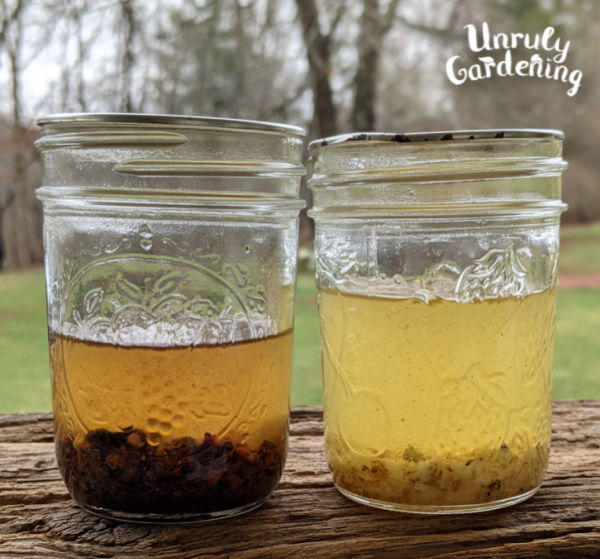
Infused Oil
Pine resin infused oil can be used to make natural products such as salve, body butter, lotion, and soap!
To make the oil, you’ll need:
- pine resin that has been crushed or powdered (see above for how)
- oil of your choice (see more on that below)
- a glass canning or mason jar, to use for infusing
- small saucepan with several inches of water, to create a double boiler effect
- a stainless steel or heatproof strainer
- a little extra oil to use when cleaning up (coconut oil works really well for this)
Resin to Oil Ratio:
How much resin and oil you use, will depend on how much resin you’ve collected, and how strong you want your oil to be.
- For most skincare applications, you can use roughly 3 to 4 times as much oil as crushed resin. So if you collect 1/4 cup of resin, then use about 3/4 cup to 1 cup of oil.
- If you don’t have a lot of resin to work with, you can use a higher ratio instead – such as 1 part resin to 8 parts oil. An example would be 1 tablespoon resin to 1/2 cup of oil. (There are 8 tablespoons in 1/2 cup of oil.)
- If using in soap, use 2 to 3 tablespoons resin for a pint jar of oil. (Which equates to about 1 1/2 to 1 3/4 cups of oil.)

Types of Oil to Use:
Olive oil is a classic choice for salves and balms, and is usually used for soapmaking infusions. Sunflower oil is another good choice, especially for those prone to eczema or sensitive skin. However, both olive and sunflower are slower to absorb into your skin and may feel a bit greasy because of that trait.
To create a slightly faster absorbing product, try using rice bran oil, apricot kernel oil, safflower oil, or jojoba oil for your infusion instead.
Pine Resin Safety
Pure pine resin is flammable, so keep it away from an open flame. Don’t heat resin in a pan over direct heat, always use the indirect heat of a double burner.
Instructions to make the oil:
- Place the pine resin is a canning jar, or other heatproof container.
- Add the oil and stir a few times.
- Cover the jar loosely with a flat metal canning lid.
- Set the jar down into a saucepan filled with several inches of water.
- You want the water to come up the sides of the jar, but not so much that the jar floats.
- Place the pan over a medium-low burner and heat for 2 to 4 hours.
- Stir every so often, scraping along the bottom of the jar, to help keep the pine resin from settling in a single clump.
- Keep a close eye during infusing time and don’t let the water in the pan dry out.
- After the resin has had time to infuse into the oil, remove from heat and strain the oil through a fine mesh sieve into a jar, while it’s still hot.
- After straining, immediately wipe out the remaining debris/resin with an old rag or paper towel, then clean the strainer with hot water and dish soap, so the residue from the remaining resin doesn’t stick to it.
- The infused oil should have a shelf life of at least 12 months.
- You’ll eventually notice some sediment at the bottom of the infusing jar – that’s fine and normal. Just carefully pour out your oil when using for recipes, leaving the sediment behind in the jar.
Tip: If your original infusing jar still has a bunch of resin stuck to the bottom and you can’t clean it out, add more plain oil, cap the jar, and tuck it away in a warm place – like the top of your fridge, or a warm room – to infuse the slower way for a month or two.

Pine Resin Salve (3 recipes)
While basic pine salve is wonderful on its own, it can also be tweaked for specific purposes – such as making a balm for painful joints/arthritis, or a chest rub for coughs – simply by switching up the essential oils used.
You could also mix and match with herbal infused oils, such as using mullein or bee balm infused oil as a sub for part of the resin infused oil in the decongestant balm, or by adding cayenne and/or ginger to your infusion if making a sore muscle rub.
1. Basic Pine Resin Salve
This basic salve recipe is useful for general first aid purposes, such as minor scrapes and scratches, or on chapped, dry skin spots. It can also be helpful as a drawing salve, for when you have a stuck splinter, or a painful boil. (Apply and cover with a band-aid overnight.)
Ingredients for the basic salve:
- 1.55 oz (44 g) pine resin infused oil
- 0.25 oz (7 g) grated beeswax or pastilles
2. Decongestant Resin Balm
The phlegm moving properties of pine are enhanced with eucalyptus, peppermint, and white camphor essential oils, to help break up congestion and open up your sinuses. You may alternatively choose to use part resin infused oil and part bee balm or mullein oil. (Example: 1 oz resin oil + 0.6 oz bee balm oil.) If you don’t have white camphor essential oil, try using rosemary EO in its place. This balm is not intended for young children.
Ingredients for the decongestant balm:
- 1.55 oz (44 g) pine resin infused oil
- 0.25 oz (7 g) grated beeswax or pastilles
- 16 drops eucalyptus essential oil
- 5 drops peppermint essential oil
- 2 drops white camphor essential oil
3. Pine Resin Sore Muscle Rub
Pine resin helps increase circulation, relieving aches, pains, and tired muscles. Here it’s combined with cypress and clove essential oil, to help boost the warming pain relief effect. If you don’t have cypress EO, try using cedarwood Himalayan or juniper berry essential oil instead. This rub is helpful for achy joints and other muscle and joint issues that feel better when you apply heat (such as heating pad, hot water bottle, or warm bath) to them.
Ingredients for the sore muscle rub:
- 1.55 oz (44 g) pine resin infused oil
- 0.25 oz (7 g) grated beeswax or pastilles
- 24 drops cypress essential oil (or juniper berry, or cedarwood Himalayan)
- 1 drop clove essential oil
What’s the difference between a salve and a balm or a rub?
Salves, balms, and rubs are soft spreadable preparations for your skin consisting of
oil (usually infused with herbs or other beneficial plants) and beeswax (or other types of wax.) They’re used to heal, soothe, or improve various skin or health conditions.
Often, the word “salve” is used interchangeably with the word “balm” or “rub”. They are
essentially the same thing in most cases, with balms sometimes having a
slightly thicker or thinner spreading consistency, depending on which herbalist
you ask. Balms are more likely to sometimes contain a butter, such as shea, mango, or cocoa butter. “Rubs” usually imply that they’re used on muscles, or as a decongestant on your chest, but not always.
Directions to make the salve, balm, and rub:
- Weigh the infused oil into a heatproof container, such as a half-pint canning jar.
- Weigh the beeswax and add it to the jar.
- Place the jar down into a small saucepan filled with several inches of water, forming a makeshift double boiler.
- Place the pan over medium to medium-low heat.
- Heat until the wax melts, then remove the pan from the burner.
- Add the desired drops of essential oils to the melted beeswax and oil mixture.
- Pour into a two ounce tin or glass jar.
- Label and store your salve/balm/rub out of direct heat and light.
- Shelf life of salves, balms, and rubs is usually at least one year, or as long as the product smells good.

Pine Resin Soap
You can also use your infused oil to make soap! If you’re making cold process soap, it’s suggested to have a more diluted oil (such as a ratio of 2 to 3 tbsp crushed resin per pint jar of oil.) Resin will speed up the soapmaking process and a high amount can cause your soap to seize up.
We have a whole tutorial with two recipe variations (one with tallow or lard, or one with vegan butters) over at our sister site, The Nerdy Farm Wife:
How to Make Pine Resin Soap {+2 recipes}
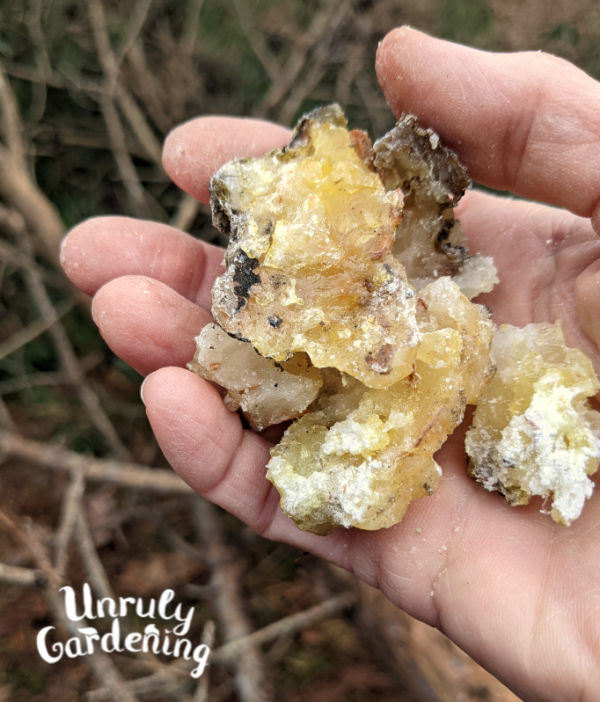
More Uses for Pine Resin Infused Oil
Try using your infused oil to make body butter, creams, or other products for your skin!
Simply replace plain oil in a skin care recipe, with part or all infused oil in its place. For example – if your favorite body butter recipe calls for 2 ounces of oil, you may wish to use 1 ounce plain oil + 1 ounce pine resin infused oil, to create your own pine resin body butter.
Pine resin can also be used to make homemade beeswax wraps (a tutorial that will eventually make its way to this site), and can be chewed as a natural chewing gum. It’s an acquired taste… and some pines, such as ponderosa, should be avoided internally during pregnancy, but it’s fun to try old-fashioned resin gum at least once in your life!
Our articles are for information and idea-sharing only. While we aim for 100% accuracy, it is solely up to the reader to provide proper identification. Be sure to seek out local foraging classes and plant walks, and invest in mushroom and foraging guides suitable for the area you live in, since some wild foods are poisonous, or may have adverse effect.

Pine Resin Salve (3 Recipes)
Equipment
- a half pint canning jar, for infusing
- a flat metal canning lid, to cover the infusing jar
- small saucepan with several inches of water, to create a double boiler effect
- a stainless steel or heatproof strainer
- a half pint canning jar, for making the salve
- a 2 ounce tin or jar, to store your salve
Ingredients
For the Infused Oil
- 1+ TBSP crushed pine resin
- 1/4+ cup oil of your choice
For the Basic Salve
- 1.55 oz pine resin infused oil
- 0.25 oz grated beeswax or pastilles
For the Decongestant Balm
- 1.55 oz pine resin infused oil (can use half of this as mullein or bee balm infused oil instead)
- 0.25 oz grated beeswax or pastilles
- Essential Oil: 16 drops eucalyptus, 5 drops peppermint, 2 drops white camphor (or rosemary)
For the Sore Muscle Rub
- 1.55 oz pine resin infused oil (can add a pinch of ground cayenne and/or ginger to the infusion, if you'd like a boosted effect)
- 0.25 oz grated beeswax or pastilles
- Essential Oil: 24 drops cypress (or juniper berry, or cedarwood Himalayan), 1 drop clove
Instructions
To Make the Infused Oil
- Place the pine resin is a canning jar, or other heatproof container.
- Add the oil and stir a few times.
- Cover the jar loosely with a flat metal canning lid.
- Set the jar down into a saucepan filled with several inches of water.
- You want the water to come up the sides of the jar, but not so much that the jar floats.
- Place the pan over a medium-low burner and heat for 2 to 4 hours.
- Stir every so often, scraping along the bottom of the jar, to help keep the pine resin from settling in a single clump.
- Keep a close eye during infusing time and don’t let the water in the pan dry out.
- After the resin has had time to infuse into the oil, remove from heat and strain the oil through a fine mesh sieve into a jar, while it’s still hot.
To Make the Basic Salve, Decongestant Balm, and Sore Muscle Rub
- Weigh the infused oil into a heatproof container, such as a half-pint canning jar.
- Weigh the beeswax and add it to the jar.
- Place the jar down into a small saucepan filled with several inches of water, forming a makeshift double boiler.
- Place the pan over medium to medium-low heat.
- Heat until the wax melts, then remove the pan from the burner.
- Add the desired drops of essential oils to the melted beeswax and oil mixture.
- Pour into a two ounce tin or glass jar.
Notes
Our articles are for information and idea-sharing only. While we aim for 100% accuracy, it is solely up to the reader to provide proper identification. Be sure to seek out local foraging classes and plant walks, and invest in mushroom and foraging guides suitable for the area you live in, since some wild foods are poisonous, or may have adverse effect.

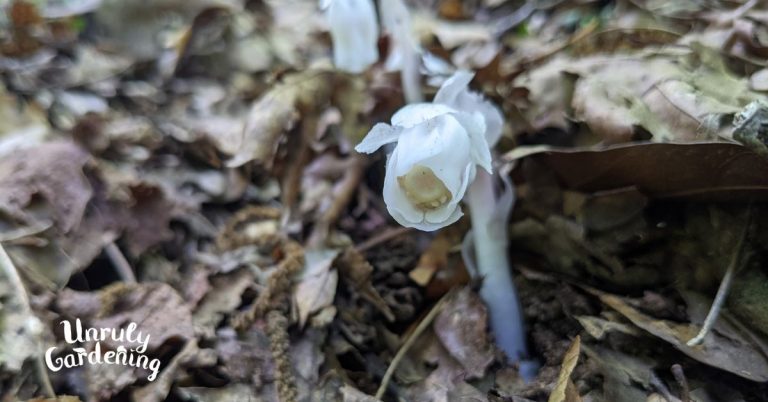
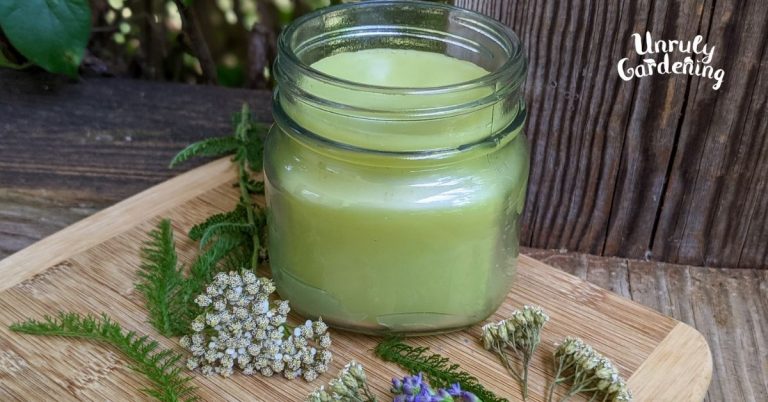
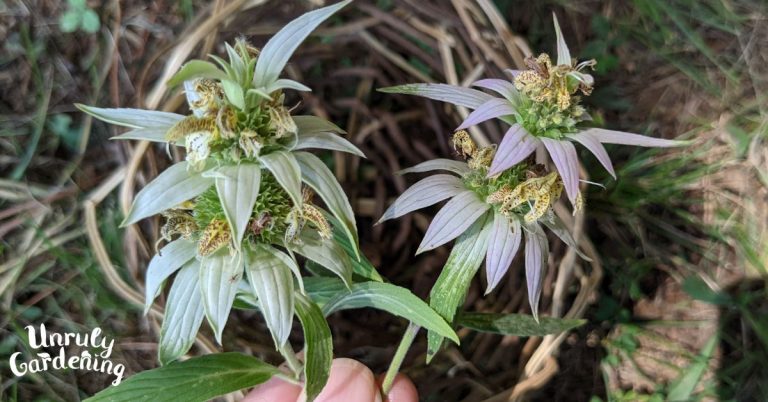
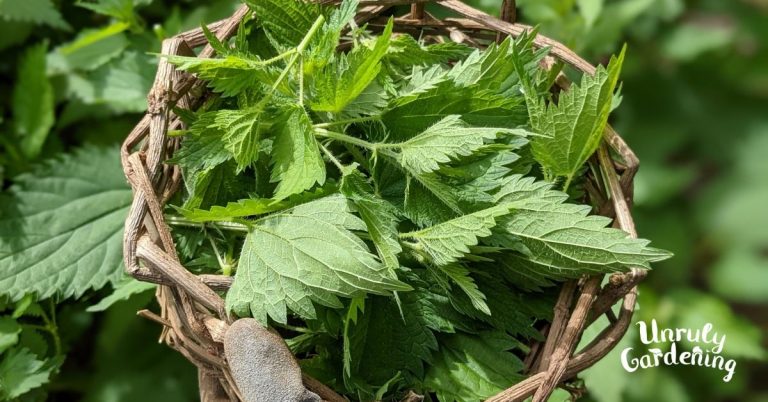
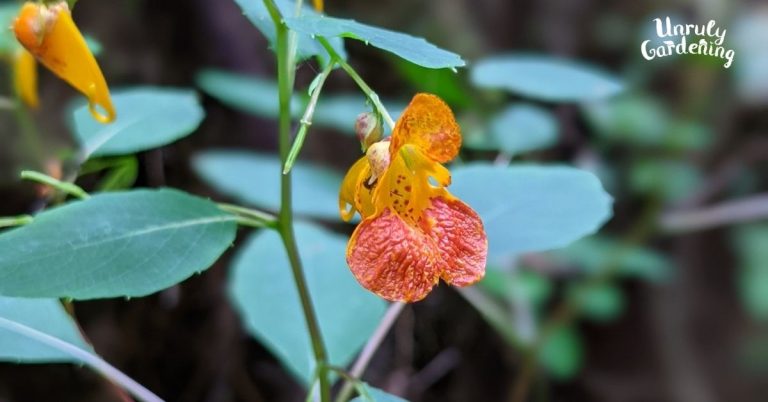
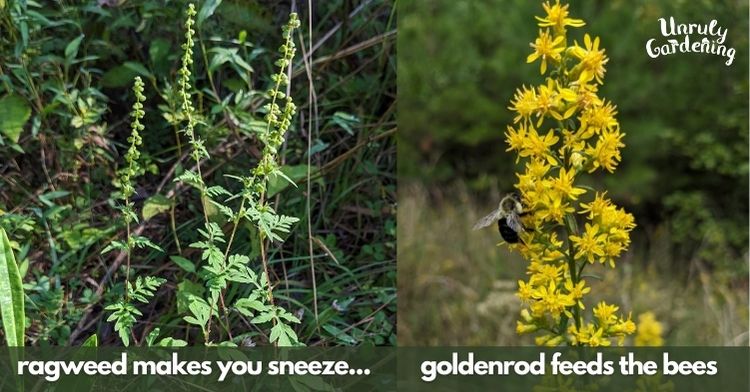
Last summer I had gelatinous blobs all over my picnic table, which sits under a large evergreen. I wasn’t sure what it was, but later, some of them got harder. I’ll have to collect it if I find them again this year!
Hi Jenny, That’s so nice to have a good source of resin handy! (Though probably not so fun to clean off of your picnic table!) ❤
Would pine resin work well in treating burns (like from a campfire)?
Hi SH! In general, you would want to avoid pine resin infused oil or salve for very fresh burns. Instead, we apply straight honey or aloe gel to new burns to help soothe them.
Once the burn is in the later healing stage though, you can apply salves.
There are some studies about pine resins and burns though, so you may be on to something!
https://pubmed.ncbi.nlm.nih.gov/?term=pine+resin+burns
Thanks for this post! I have resin and I know how difficult it is to make an oil infusion from pieces. Best regards from Poland!
Hi Pat! I’m happy to hear you enjoyed the post about pine resin! 🙂
This is great. Thank you from Sydney, Australia.
Hi Ahil, So happy to hear you found the information on pine resin helpful!
would this be the same resin that you would make bee wraps with?
Hi Loub, Yes, you can use pine resin to make beeswax wraps too!
I stumbled upon pine resin when I found what I thought was a fungus under a tree. Since, I’ve been a collecting fiend. I’ve been fortunate to find up to tennis ball size around the local trees. The problem is, they’re covered in soil and tree debris. Is there a way to “wash” that off? This post is everything! Thank you.
Hi Bridget! I just heat the pine resin as it is with oil, then strain it through a fine mesh strainer when melted.
That will catch any bits of tree debris.
That’s a good question about the soil though, I rarely find any resin directly on bare ground, so haven’t ran into the covered-in-soil problem before.
That’s awesome that you’ve found such treasures! 🙂
For getting the dirt and debris out of some very dirty beeswax I had I put it in a cotton drawstring pouch (or put it in an old sock -no holes!) tie shut and I put it in an old pot full of water and boiled it till the wax melted and came out of the pouch/ sock. The other debris (dead bees, wings/legs etc stayed in the fabric. After cooling I gathered the cleaned wax and used it. Couldn’t this method be used with the pine resin?
Hi Jane! That’s something I haven’t tried, so am not sure. If you give it a try, we’d love to hear how it goes! 🙂
Very informative, Useful, Easy to understand, to the point always. Really inspiring to learn other natural, home-made Uses for your needs. Thank you, Unruly Gardener for all the info, n being such a inspiration to us who are learning to make Nature a way of Life in our future endeavors. Stay blessed always, Keep doing what ya do that makes you happy 😊. ~NaNa~
Hi Kentucky NaNa, Thanks so much for the kind words and I’m so glad to hear that you enjoyed the article! 🙂
Thank you so much for this information! I’m wondering how fresh the resin needs to be. If I collect some on a hike and don’t get around to making it into salve for a week or two, is that okay?
Hi Amber! Yes, that’s fine to save the resin for using at another time. You can let it dry in clumps and use it months later!